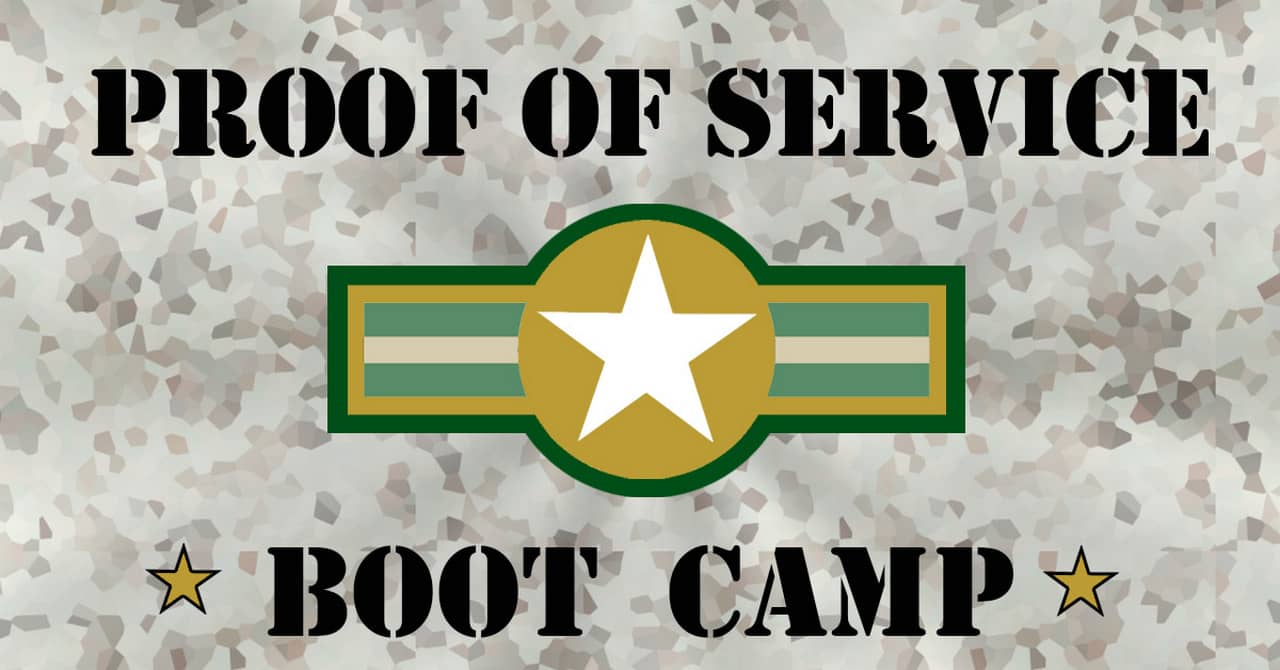

Proof of service is a small thing that makes a huge impact on a legal matter—especially if it’s not done correctly. We’ve designed this fact-packed crash course to build your proof of service expertise with the effectiveness of a Marine Corps boot camp, but without the push-ups and drill sergeant culture.
Without moving from your comfy chair, you’ll be razor sharp in no time about:
Think you’re ready? OK, recruit, let’s move out!

Proof of service in a nutshell
When you make an important purchase, you always ask for a receipt. It’s the same with proof of service, which functions as a sworn statement that confirms court documents have been served on a party.
A proof of service form (sometimes referred to as a proof of service affidavit) records the name of the person served as well as the time, date, and location where the documents were served. The form describes the types of documents served, the way they were served to the party, and the process server’s name and signature.
Proof of service also acts as a failsafe device. In the event a defendant claims his or her papers were never served, proof of service says differently.
Now that you’ve got the basics, let’s put proof of service into context with its parent action: service of process.

What does ‘service’ mean?
For legal professionals who are new on the job or haven’t worked in litigation, here’s a quick primer about service of process. If your journey through this boot camp goes no further than this paragraph, this is an essential takeaway:
Service of process establishes jurisdiction.
Unless a court has jurisdiction over the party or parties involved in a legal matter there can be no trial.
For the party being sued, service accomplishes three things:
Service of process uses specific types of court documents to launch legal matters, including trials. To help you visualize the relationship between these documents and their case types be sure to note Table 1 below.
Table 1.
Case initiating document
Case type
Although there are some exceptions, all these documents must be personally served to the defendant or respondent before anything can proceed.
Documents such as discovery requests and discovery responses are not filed with the court, so the proof of service for these documents is not filed after the papers are served. The proof of service should, however, be signed for the law firm’s own records.
Wouldn’t it be nice to tackle two jobs at the same time?
File and serve allows you to simultaneously submit a file order and a service of process in just a few easy steps through an online portal:
It’s easy to start using file and serve today. Call now for details! (909) 664-9565.
Which type of service?
There are several ways to conduct service of process but two of the most common ways are personal service and substituted service.
Check out The Ultimate Guide for Process Serving to see the full range of service of process methods. The guide is packed with ideas law firms can use to get greater value from service of process, including how to find out where you may be losing money on service of process orders.